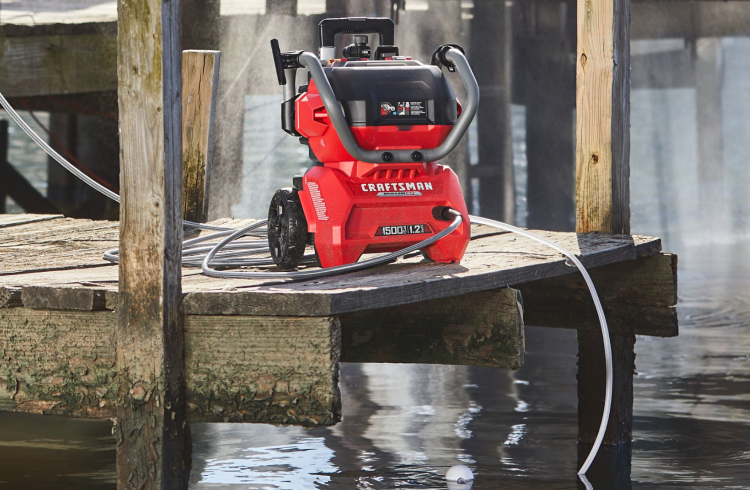Pressure Washers


FAQs
-
PSI is pounds per square inch: This delivers the punch during a power wash, forcing contaminants off the surface.
GPM is the gallons per minute: This refers to the amount of water flow that flushes the contaminants pushed off by the PSI.
Both are very important. Users prefer more PSI or more GPM, depending on their needs. Farmers may want more GPM to flush contaminants away from the fresh soil; a business owner may need more PSI to get the grime off the exterior surface of their storefront. -
The required PSI (pounds per square inch) for a pressure washer depends on the surface needing cleaning. 1,300 to 2,000 PSI is sufficient for light-duty cleaning tasks such as cars, patio furniture, and decks. Medium-duty tasks such as cleaning sidewalks, driveways, and fences require a PSI of 2,000 to 2,800. 2,800 to 4,000 PSI is best for heavy-duty tasks such as stripping paint or cleaning concrete. Select the appropriate PSI to avoid damaging the surface you're cleaning.
-
The strongest PSI for a pressure washer can vary depending on the brand and model. However, some of the most powerful pressure washers on the market can produce up to 4,000 PSI (pounds per square inch) of pressure.
The higher powered gas pressure washers are typically used for heavy-duty cleaning tasks such as removing paint, cleaning concrete, and stripping tough stains. It is important to use caution when operating a pressure washer with high PSI as it can cause damage to surfaces or even injure the operator if not used correctly. -
The choice between a gas-powered or electric pressure washer will depend on your specific needs and preferences. An electric model may be the way to go if you need something more portable and convenient for smaller jobs. If you need a lot of power and plan to use the pressure washer frequently, a gas-powered model may be the better choice.
-
There are several types of nozzles available for pressure washers, each designed for specific applications. It's important to use the correct nozzle for each application to avoid damaging surfaces or causing injury. Always refer to the manufacturer's recommendations for your specific pressure washer model and nozzle types.
0-degree nozzle (red): This nozzle produces a pinpoint jet of water and is best used for tough cleaning jobs like removing stubborn stains or debris. However, it can also damage surfaces or cause injury if used improperly, so use with caution.
15-degree nozzle (yellow): This nozzle produces a narrower spray pattern, making it ideal for removing dirt and grime from surfaces like concrete or brick.
25-degree nozzle (green): This nozzle produces a wider spray pattern and is ideal for general cleaning tasks like washing cars or siding.
40-degree nozzle (white): This nozzle produces the widest spray pattern and is best used for rinsing or applying soap to delicate surfaces like windows or screens.
Soap nozzle (black): This nozzle is designed specifically for applying soap or detergent to surfaces. It produces a low-pressure spray that allows the soap to cling to surfaces and work effectively.
Turbo nozzle (cone shaped): This nozzle is a specialized type of nozzle that uses a spinning jet of water to provide more cleaning power than a standard nozzle. The nozzle has a rotating spray pattern that creates a cone-shaped spray, which spins at high speeds to produce a powerful cleaning action. -
The choice between a gas-powered or electric pressure washer will depend on your specific needs and preferences. If you need something more portable and convenient for smaller jobs, an electric model may be the way to go. If you need a lot of power and plan to use the pressure washer frequently, a gas-powered model may be the better choice.